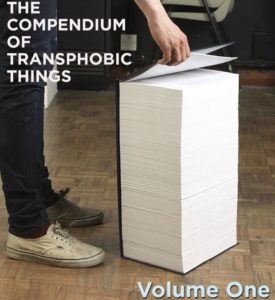The most spurious piracy figures ever?
The content industry has a long and shameful history of spurious figures when it comes to the subject of intellectual-property piracy. This much we already knew. But the most recent set of “statistics” on the economic cost of piracy – which have, of course, been seized on and repeated unquestioningly by the press – may have set some sort of record.
Previously-unheard-of expert gaming industry analysts 24/7WallSt this week published, as fact, the claim that iPhone app piracy has cost Apple and developers the sum of $450 million. But applying the slightest modicum of journalistic scrutiny to the claim – something which was evidently beyond most of the sites reporting the story – reveals it to have been built on a wibbly-wobbly Jenga tower of groundless assumptions on top of empty speculation on top of wild guesses on top of outright lies. Let’s step through it, shall we?
1. “Bernstein analyst, Toni Sacconaghi, estimated that between 13% and 21% of those downloads are from paid applications.”
Just three sentences in and we’ve already found someone plucking figures off the top of their head. Who is Toni Sacconaghi? What is his/her expertise in the iPhone market on which this “estimate” is based? Other analysts place the figure at between 2.5% and 6.7%, for example.
2. “Sacconaghi estimated that Apple’s revenue from the App Store is between $60 million and $110 million per quarter.”
Since one of those estimates is almost twice the size of the other, Mr/Ms Sacconaghi is clearly someone who likes to hedge their bets. A margin of error of $200m a year isn’t exactly sticking your neck out and nailing your colours to the mast, and it’s certainly not much of a basis for professional analysis.
3. “According to this analysis, the average price of an application purchased at the App Store is $3.”
So already we can pretty much dismiss Mr/Ms Sacconaghi as a clueless bumpkin who doesn’t know what he or she is talking about. Anyone who keeps a close eye on the daily release lists on the App Store will be snorting into their cocoa at the assertion that the average price of an app is anywhere near $3.
Of the current top paid apps in all categories, none of the top 10 cost as much as $3 (though to be fair, there’s a single one at $2.99), and just 18 out of the top 100 paid apps cost over $3. The average price of the top 10 is $1.29, the average of the top 30 is $0.99, and the average of the top 100 is $2.18, with most of the more expensive stuff down in the lower reaches of the charts. So already Mr/Ms Sacconaghi is exaggerating the true figures by anywhere from 40% to 200%, in addition to having a 83% margin of error on their original guess at the total numbers.
4. “That amount has certainly increased since this research report was published because of the rapid growth of the number of applications.”
That’s an intriguing use of the word “certainly”, based on the hugely flawed premise that more apps automatically means more sales. In fact it doesn’t necessarily mean any such thing, but we’ll get to that later*.
5. “Most iPhone users have not jailbroken their phones.”
Do we have a source for that claim? Apparently not.
6. “It is difficult to get precise figures for the number of iPhones and iPod touches that have been jailbroken.”
Huh? But didn’t you just say – ?
7. “Jay Freeman, operator of Cydia, a renegade app store that can be found on almost any jailbroken iPhone or iPod touch device is probably the best source for this estimate. Freeman told Wired Magazine in August 2009 that he has received over 4 million unique visitors to his store. This represents about 10% of iPhones and iTouches that existed at that time.”
Ah. So that stated fact (“Most iPhone users have not jailbroken their phones“) was in fact just more speculation based on yet another unsupported/anecdotal figure of highly dubious relevance. Righto. Carry on.
8. “The jailbreaking process has only become easier since August”
It has?
9. “and if that figure is still about 10% of all Apple devices that can access the App Store, that would mean that the total number of jailbroken devices today is approximately 7.5 million assuming that total worldwide sales of the iPhone and iPod touch are now 75 million.”
Well, yes. And if we assumed that total sales of the iPhone and iPod Touch were a billion, then it would be 100 million. But on what grounds would we be making that assumption? The last official sales figures from Apple were in Spring 2009 and stated a total for iPhone and iPod Touch of 37m, and I can’t find the figure of 75m mentioned anywhere, even as speculation, except by 24/7WallSt. So another number just plucked out of thin air.
10. “Pinch Media, a company that specializes in mobile software analytics, has found that only 40% of jailbroken devices use pirated software.”
That’s impressive, given that we don’t actually know how many jailbroken devices there are. 40% of what, exactly? If Pinch Media knows the actual number of jailbroken devices, why aren’t we being told what it is? And if they don’t know, then how do they know it’s 40%?
Still, if we take these stats at face value just for the heck of it, what we’re being told is that around 10% of devices are jailbroken, and only 40% of those are actually used for piracy. Which means that only 4% of iPhone/iPod owners are using pirated apps, and 96% are law-abiding citizens.
11. “Piracy rates almost certainly increase with the cost of an application. TomTom’s US & Canada GPS product for the iPhone, which retails for $79.99, ranks second in handheld application downloads on piratebay.com, a file-sharing torrent.”
Trans: “This is some stuff we’ve just decided is probably true. We’re not quite sure what a ‘torrent’ is, but everyone’s talking about them so we just threw the word in somewhere at random.”
12. “A conservative estimate of the average piracy rate is that for every paid application developed and sold at the App Store 3 more are pirated.”
Whose estimate is this? Steve Jobs? President Obama? Stephen Hawking? The guy who comes to your office delivering sandwiches? (And when did the App Store start being a developer?)
13. “Based on our review of current information, paid applications have a piracy rate of around 75%. That supports the figure that for every paid download, there have been 3 pirated downloads.”
Trans: “Based on an unattributed, unquoted estimate allegedly made by someone somewhere, another figure we plucked out of nowhere is correct.”
14. “That puts the number of pirate downloads at 1.53 billion. If the average price of a paid application is $3,”
…which, as we’ve seen, it isn’t.
15. “…that is $4.59 billion dollars in losses split between Apple and the application developers. That is, of course, assuming that all of those pirates would have made purchases had the application not been available to them for free. This is almost certainly not the case. A fair estimate of the proportion of people who would have used the App Store if they did not use pirated applications is about 10%.”
Is it? Based on what, exactly? Precisely how is this figure of 10% arrived at? From which known figures or research is this “fair estimate” derived? To the best of WoSblog’s knowledge, there has only ever been one vaguely scientific and factual study done on the relationship between pirated copies and genuine lost sales. It showed that the actual number of lost sales relative to incidences of pirate copies was in fact roughly 0.1%. In other words, 24/7WallSt’s figure of 10% is actually ONE HUNDRED TIMES the level suggested by the only known factual evidence on the subject.
16. “Apple intends to ignore the piracy of applications and will focus on the tens of billions of dollars that it makes on its hardware.”
And what the heck, let’s finish off with one last completely invented assertion unsupported by any sort of evidence, just for a punchy final sentence.
So, let’s reassess that $450m figure, shall we?
– it’s based on an erroneous assumption that overstates the likely conversion rate from pirate copies to paid ones by a factor of 100. So we’re immediately down to $4.5m, rather than the more dramatic $450m claimed.
– it’s based on a wildly inaccurate estimate of the average app price, overstating the reality by between 40% and 200%. Let’s split the difference and call it 120%. So our $4.5m is slashed further, to about $2.04m.
– and even that figure is based on a complete guess at the proportion of App Store downloads that are paid apps, based on someone else’s guess. If the lower end of the Bernstein estimate (which, remember, is just some random nobody picking a number out of thin air anyway) is closer to the truth, then 24/7WallSt’s figure could be out by another 25% or so, giving us a final figure for the actual cost of App Store piracy of $1.56m. And if the Lightspeed figures linked back at point (1) are accurate, it could be half of that (at their maximum estimate) or just a fifth (at the lowest end of the range), meaning it could even be as low as $0.3m.
In other words, the headline figure repeated verbatim by websites everywhere could quite likely be somewhere in the region of FIFTEEN HUNDRED times the real amount that piracy has cost the App Store, or a truly staggering exaggeration of 150,000%.
—————————————————-
* All figures for the “losses” caused by piracy are of course based in any event on another, far greater myth – the myth of infinite revenue. All stated piracy “losses” assume that were there to be no piracy, consumers would suddenly find hundreds of millions of additional dollars to spend on games, music or whatever type of content the complaining body is representing at that given moment.
The truth, of course, is that consumers have a fixed amount of disposable income, which they tend to dispose of fully for any given period. (If it suddenly became impossible to pirate, say, videogames, and if that DID translate into increased sales, it would simply result in that expenditure being lost to other sectors – people would buy less music, say, because they’d spent the money on games.) An interesting set of stats seems to back that core assertion up a quite illuminating manner:
http://www.samknows.com/broadband/news/piracy-isnt-stopping-record-sales-1210.html
Note the figures: in 2008, almost twice as many movies were released as in 2004 (despite the fact that we’re constantly told piracy is killing the movie industry and putting studios out of business, and despite the large increase in the availability/uptake of fast broadband connections and torrent sites over that period, making piracy hugely easier), yet the total amount spent on going to see them was practically identical. As, indeed, it was for all the intervening years. If you stop piracy you DON’T increase revenue, because people don’t suddenly magically have more money to spend. And if piracy gets bigger and bigger, you DON’T lose revenue:
http://www.guardian.co.uk/music/2009/jan/08/uk-singles-sales-record-high
http://www.guardian.co.uk/music/2010/jan/07/singles-sales-reach-record-high
Short version of all the above: everything anyone in the content industry ever tells you about piracy is complete bullshit. Don’t believe a word of it.





















An excellent piece, Stu. J. Maybe you should send it to a few Industry types/publications? Just to get the word out there and perhaps kickstart a BALANCED debate? Hey, stranger things have happened…
Well, if people retweet it, link it etc I’m sure it’ll get out there.
Very good article. Retweeted it. I thought the contradiction between #5 and #6 was hilarious.
Excellent stuff. You should email it to 24/7WallSt. and ask them if they’d like to comment on it. Then laugh at them.
thepscgamer Says:
“Very good article. Retweeted it. I thought the contradiction between #5 and #6 was hilarious.”
Wha? Those statements aren’t in contradiction. I could make the statement that “studies estimate that somewhere between 5%-20% of iPhone users have jailbroken their phones”. That statement could be summarized as “Most iPhone users have not jailbroken their phones.”, and I could also say “It is difficult to get precise figures for the number of iPhones and iPod touches that have been jailbroken.” (Which is the reason for the large margin of error.)
They’re in contradiction because one says “We don’t know the numbers”, and the other makes an empirical statement of fact about the numbers. (By referring to “the majority” of iPhones.) You either know the numbers or you don’t. If you don’t, you can’t make statements about “the majority”, which are in fact just complete guesses based on questionable data of dubious relevance, and expect them to be taken seriously. (Who says all jailbroken phones have Cydia on them, for a start?)
slide to play cited the original article, i responded with this
link to slidetoplay.com
Good stuff, Stu. keep em coming.
Interesting piece.is game piracy still a thing or has the interweb killed it?
Had an Iphone once,Some scummy git stole it from me at the gym…..They did me a favour.
If I buy a bit of software then as far as I’m concerned it belongs to me and I’ll do whatever I want with it…
Arr Jimladd…..